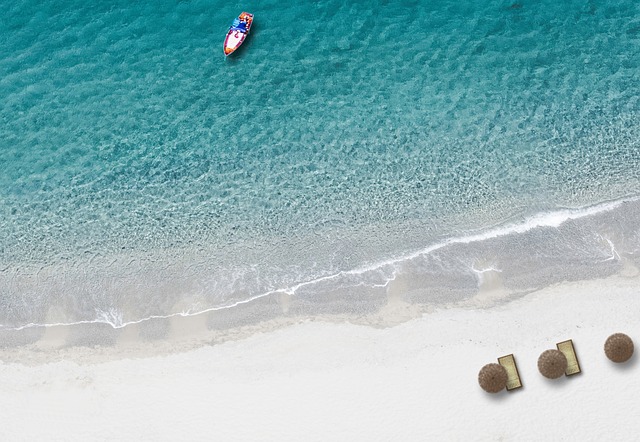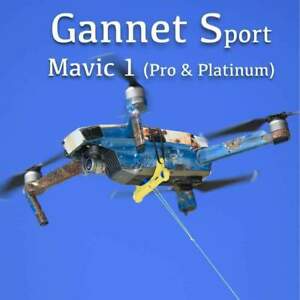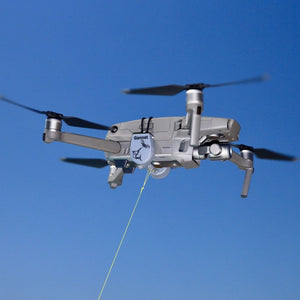
If you are an avid fisherman who lives in Australia, you may be able to use a drone and get an aerial view around the waters. Drones are equipped with many features including a GPS positioning and GPS receiver, a GPS transmitter, a GPS receiver, an angle-adjustable camera, and a mechanical payload. You can also purchase fishing lines, which are stable and safe. One example is the SKY RIGGER drone.
The drone fishing line SKY RIGGER can be used for spotting fish.
The SKY RIGGER flexible fishing line system allows you to fish from the sky with minimum effort. The system features two rotating leg clamps that can attach to various drone models. The release mechanism features a bayonet-style connection, and a cam lock arm that allows you to quickly open the line clamps. Unlike other drones, the Sky RIGGER requires no batteries and can accommodate all fishing techniques safely.
The SKY RIGGER has an automatic release mechanism for when a fish strikes your fly. The line can be manually released by either your rod or hand. This feature is available for all models of the SKY RIGGER. It is highly recommended that you buy a Phantom 3 before buying the new SKY RIGGER. Here are some pros and cons to the new line system.
It has a mechanical payload release
A good drone's mechanical payload release is one of its most important characteristics. Many drones have a release mechanism that allows the angler to easily remove the fishing line. Some models don't have a release mechanism. Instead, users must "yank the fishing line" to free the drone. This can be frustrating, especially for people who aren’t comfortable using their fingers to release the line.

Its payload release function is another important feature. The payload should be able to release the drone's line when the fish is struck. Practice catch and release fishing before you attempt this method. This is because the fish can't be simply pulled to shore and released into the sea. Many have had positive experiences with the DJI Phantom. This technology is not yet at the same level as the fishing drones on the market.
It comes with a GPS location system
Rippton, a joint venture between Australia and the Netherlands that specializes on technology-oriented fishing products, is called Rippton. It was founded to improve the success rate of anglers by creating products that increase the enjoyment of fishing. Rippton's Mobula drone is equipped with a GPS positioning device and remote release. The Mobula can be used to store bait at the surface and provide resistance against kite clips. It is also environmentally friendly.
It is light at 3 pounds and can take off for 18 minutes. The high-tech GPS system allows it to be controlled up to 2,000 feet away. The range is 1000 meters or half a miles. Intelligent flight modes are also available. Its point of interest feature lets it take high-quality images of its surroundings. You can enjoy stunning views of fish through its high-resolution lens.
It also has an failsafe feature
The Aerokontiki fisherman drone comes with a failsafe feature: it monitors the battery level and releases the fishing line when needed. In case of battery failure, it will land back on dry ground to continue its mission. It can be operated anywhere with its industrial-grade flight control system. This drone is also waterproof, so you can use it even in the most difficult water spots.

FAQ
What kind batteries does a drone need?
Drones are powered by lithium-ion battery. A typical drone runs on between 3 and 6-volts.
Is it safe to drive while flying a drone?
Drone flying at high speed is dangerous. You may also run into pedestrians and other animals. Your car could be damaged if it hits power lines or trees.
What is the law on drones flying over private property?
The FAA has recently issued new rules for commercial drone flights. These rules only apply to UAVs less than 55 lbs and lower than 400 feet above the ground. Commercial operators must register with the FAA and obtain a license from the agency. They also need permission from local authorities when operating near airports or other restricted areas.
Can my drone be flown indoors?
Yes, your drone can be flown indoors. There are only a few things you need to do: Make sure your home is free of obstacles and hazards. Avoid flying near windows, doors and heating vents.
Can I fly my drone in my local park?"
Yes, you can fly drones at parks all around the world. Some countries prohibit the use of drones in parks. This is because of safety concerns. See our list to see where drones can be flown legally for fun.
Statistics
- With the top 10% making over $100/h and the bottom 10% making as low as $10/h. (dronesgator.com)
- According to industry research from ZipRecruiter , there are 10 cities where the typical salary for a Drone Pilot job is above the national average. (dronesgator.com)
- Research and Markets predict a growth rate of 51.1% over the next five years. (thedroneu.com)
External Links
How To
How to Fly Drones With Beginners
A drone refers to a remote-controlled aircraft designed for aerial photography, surveillance and scientific research. Drone technology has been around since World War II. DJI's Phantom quadcopters became commercially available in 2010. Since then, there have been many different types of drones available, from beginner-friendly models like the Parrot AR Drone 2.0 to professional-grade multi-rotor craft like the DJI Mavic Pro.
You can fly a drone in many different ways, including:
-
Remote control - This method uses a control device attached to your hand, which enables you to steer the drone through its flight path. There are two main types for controllers: Joysticks or On/Off switches, which can be used to control the drone's flight path.
-
Manual Control – This method lets users remotely control the drone by using a smartphone app. You will need to keep track of where the drone is going and follow the directions from the app.
-
Autonomous flight - The drone takes over the piloting duties. It's basically flying autonomously without any human intervention. For the autonomous flight to occur, the drone must have a built-in camera and sensors capable of capturing images and data.
-
Triggered flight - This is similar to manual control except that the pilot sets up a preprogrammed route and the drone follows the route until it reaches its destination. The drone automatically lands once the route has been completed and returns to the base.
-
Landing Gear- Some drones include landing gear that allows for safe landing if the power goes out or they run out of batteries.
-
Goggles-Some pilots use goggles to protect their eyes from debris during operations.
-
Camera - Certain drones come with cameras that allow you to take photos and videos from high above.
-
Obstacles - Some drones can be equipped with obstacle avoidance systems that prevent them from crashing into obstacles.
-
Speed - Some drones can travel at speeds over 40 mph.
-
Battery Life – Most drones will last 20 minutes to three hours depending on how powerful they are.
-
Some drones have a range of up to 30 miles, depending on their model.
-
Power source – Some drones require external power sources, others require internal batteries.
-
Weight – Some drones are less than one pound, while other models can be up to four pounds.
-
Size - From small drones that can be carried in the palm of one's hand to larger drones that weigh over 50 pounds, drones come in a variety of sizes.
-
Price – All drones fall into a price category. These range from expensive models that cost thousands to affordable options that start at 100 dollars.